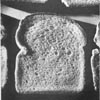Speaking of outlines, I tried the crowquill nib.
And the results are in! The first row is sketches, the second row is inking in my usual manner (with 08, 03, and 01 Micron drafting pens), and the third is inked with a crowquill nib.
Though the line variation with the crowquill nib was really cool, I had trouble making it look neat. This is because the nib just doesn't want to be pushed in some directions, whereas felt-tipped pens don't give a damn. It was also very hard to get thick lines, which makes the drawing look kind-of reedy. I know this kind of pen can be used in a precise manner-- they use them to make science and medical drawings! so I guess I just need practice.
I might see if the crowquill pen works better on smaller drawings.
Though the line variation with the crowquill nib was really cool, I had trouble making it look neat. This is because the nib just doesn't want to be pushed in some directions, whereas felt-tipped pens don't give a damn. It was also very hard to get thick lines, which makes the drawing look kind-of reedy. I know this kind of pen can be used in a precise manner-- they use them to make science and medical drawings! so I guess I just need practice.
I might see if the crowquill pen works better on smaller drawings.


Comments
Hoooooooray, insommmmmmnia!
Edit: I looked crowquills up online to see what they are. They do seem to be really good for fine details. And I really like how your characters look in that penstroke; I can only imagine how awesome they will be with practice.
Now, if I can only find out how to get a good virtual inking pen nib in OpenCanvas or Photoshop...
Jennie Breeden, local Atlantan who draws Devil's Panties, offers a nib pen inking tutorial.